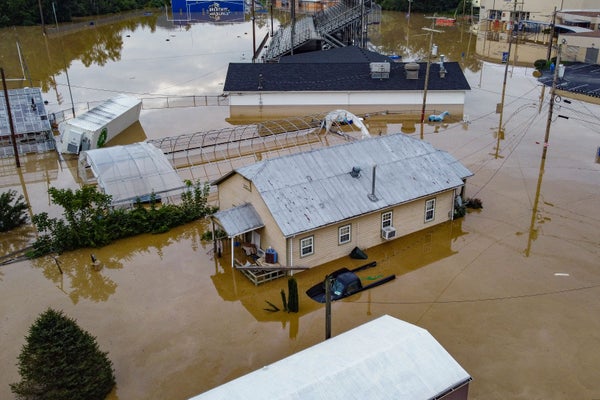CLIMATEWIRE | Climate change is expected to exacerbate social inequality in the United States and put millions of people at risk of severe financial distress, according to a new report from the Treasury Department.
The findings, released Friday, focused on two sets of data.
Using county-level climate projections through 2045, the Treasury Department determined that about half of all U.S. counties face “elevated exposure” to one or multiple climate hazards including wildfire, extreme heat and flooding.
On supporting science journalism
If you're enjoying this article, consider supporting our award-winning journalism by subscribing. By purchasing a subscription you are helping to ensure the future of impactful stories about the discoveries and ideas shaping our world today.
Treasury officials then overlaid that information with data about each county’s “social vulnerability,” which takes in account more than a dozen factors including poverty, health conditions, race and ethnicity.
The result: About 1 in 5 U.S. counties are both socially vulnerable and highly exposed to natural disasters.
It’s a combination that has the potential to “compound existing inequities and cause disproportionate financial strain,” according to the report.
As one example, the report looked at the Appalachian region of the eastern United States, which is more likely to flood as the planet warms. In addition to the climate threat, residents in that part of the country often have reduced access to health care services and “more limited employment opportunities,” the report says.
Taken together, “households in this region may struggle to manage expenses if flooding events result in reduced working hours, or damage or destruction of household property,” wrote Treasury officials.
Appalachia isn’t the only region at risk. The report highlighted similar problems in the southwestern United States, which is exposed to wildfires, and the Mississippi Delta, which is vulnerable to spells of extreme heat.
High temperatures can be especially dangerous for Americans with less wealth.
“Lower-income households often lack access to air conditioning, which may make them more susceptible to heat-related illnesses,” the report said. “Additionally, households in the Mississippi Delta are more likely to include older adults and individuals with pre-existing health conditions. These households may experience financial strain from added healthcare and utility costs.”
The dual threat of climate impacts and social vulnerability isn’t a new problem. But policymakers say it’s an issue that deserves a robust response.
“We know managing financial risk is not a new challenge, especially for low income and underserved communities who are often extremely sophisticated budgeters,” Suzanna Fritzberg who serves as a deputy assistant secretary at the Treasury Department, said Friday during an event hosted by the Urban Institute.
“But it is an emerging risk, it is complex," Fritzberg added. "It has both near-term and long-term challenges."
The report comes more than two years after President Joe Biden signed an executive order directing federal agencies to consider the financial threats of climate change.
That has resulted in a range of actions from the Treasury Department, including working with a council of top financial regulators to examine how natural disasters and the transition away from fossil-based energy could affect the global financial system.
The agency also has called on property and casualty insurers to provide ZIP-code-level data about climate-fueled financial risk, and it more recently released principles meant to streamline financial firms’ climate commitments.
Even so, more work needs to be done.
The report outlines several examples of how climate impacts or disasters can affect household finances. That includes an interruption of income, particularly for outdoor workers in industries such as agriculture, tourism and construction. Floods and wildfires can also be devastating for families who do not have the savings required to quickly repair their homes.
Those scenarios are made worse, Treasury argues, by the fact that many households are both underinsured and face high insurance premiums — further cutting into their savings and leaving their homes unprotected.
Also notable is that in the wake of a disaster some households turn to loans or credit cards to cover costs — and struggle to make payments on existing debt. That can increase their likelihood of default, an outcome that can have a long-term impact on credit scores and access to money.
“That was really our goal with this report, was to try to really put the granular household-level focus on some of these broader events where we see the macro-level impacts and the costs, but understand how it really reflects in people’s day to day lives,” Graham Steele, Treasury’s assistant secretary for financial institutions, said Friday.
Reprinted from E&E News with permission from POLITICO, LLC. Copyright 2023. E&E News provides essential news for energy and environment professionals.
